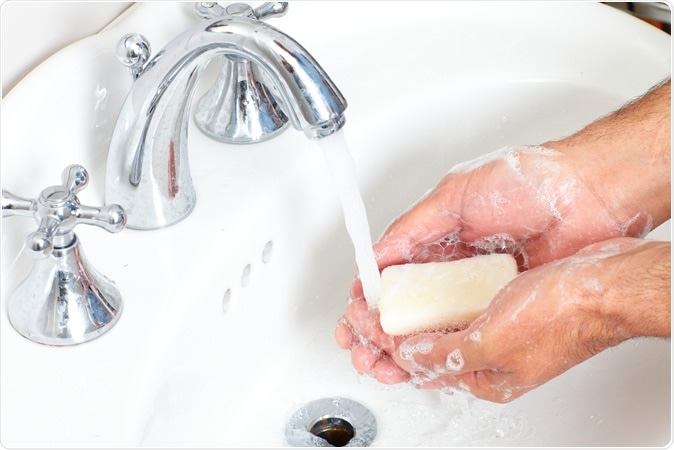There are two ingredients, triclosan and triclocarban, that are used in several cleaning products such as soaps, toothpastes, detergents, carpets, paints etc. They are mainly used to kill the microbes such as bacteria, fungi and viruses. These chemicals however persist in the environment and continue to pose a risk says a new study.

Triclosan and triclocarban are commonly used in products intended for washing [e.g., an estimated 96% of triclosan is used in products that are intentionally disposed of down the drain, such as soaps and detergents - Image Credit: Kurhan / Shutterstock

Researchers have said that their use may benefit but it is not worth the risk. The statement, The Florence Statement on Triclosan and Triclocarban, was released this week by more than 200 scientists and health professionals from 29 different countries and was published in the Environmental Health Perspectives journal. The statement urges manufacturers and communities to limit the production as well as use of triclosan and triclocarban and also look closely at other antimicrobials. All products with these two chemicals need appropriate labeling says the statement along with adequate warnings.
According to the experts, these chemicals get accumulated in land, water and wildlife. They tend to come back to humans and cause harm. The risks far outweigh their benefits. Dr. Ted Schettler, science director of the Science and Environmental Health Network and one of the signatories of the statement said that this was an attempt to draw attention to the situation. These two chemicals are at the top of their hit list since they have been used for so long and exposures to them are so widespread.
These chemicals that kill microbes can come back into animals and humans the researchers add. They cause harmful effects on the animals’ hormone systems. This leads to problems with reproduction and developmental problems. These can be extrapolated to humans as well. These chemicals could be linked to decreased growth of the fetuses or unborn babies, low birth weight of babies, preterm births, smaller head circumference of male babies at birth and other problems. Triclosan has also been linked to allergies and worsening of asthma cases especially among children.
At present both these chemicals are being phased out in the daily use products. This year in February, the EU banned triclosan in hygiene products. United States too is removing triclosan from hand soaps in a systematic manner. The Food and Drug Administration, FDA banned it last year due to the linkages of this chemical and changes in the hormone systems. According to FDA, normal non-antibacterial soaps are just as good in removing harmful microbes and these chemicals are no really necessary at preventing illness. According to Avery Lindeman, deputy director of the Green Policy Institute and one of the signatories of the statement, these chemicals are more of a “marketing ploy” than of any real use.
However despite these bans, some cleaning products, cosmetics and Colgate Total toothpaste still contains triclosan. According to Lindeman, some manufacturers are removing this chemical and substituting it for another that may be just as harmful.
The spread of the chemical is alarming say researchers. For example in a 2008 study, United States residents were tested for presence of these chemicals in their bodies. It was seen that 75% of the participants had presence of triclosan in their urine samples. Researchers warn that these chemicals, once spread into the environment are difficult to get rid of. They tested water samples and found traces even in drinking water samples along with natural water samples. The U.S. Geological Survey tested and found triclosan in 60 percent of U.S. streams. This chemical being toxic to algae, crustaceans and fish is seriously damaging the ecosystems they add.